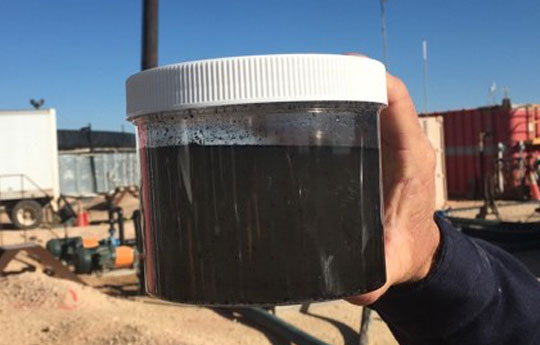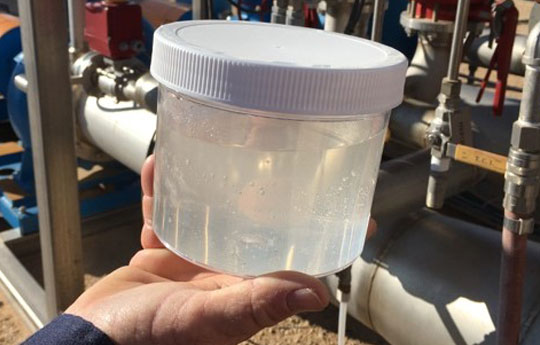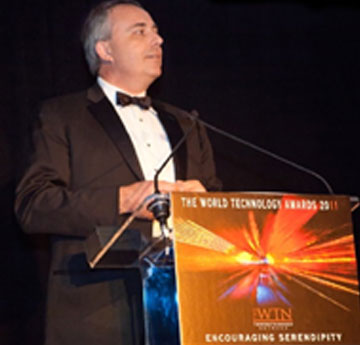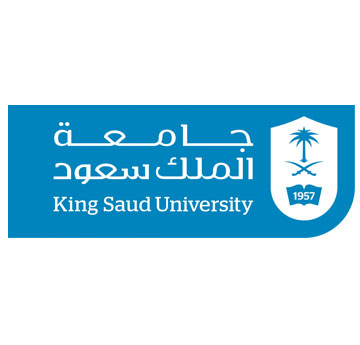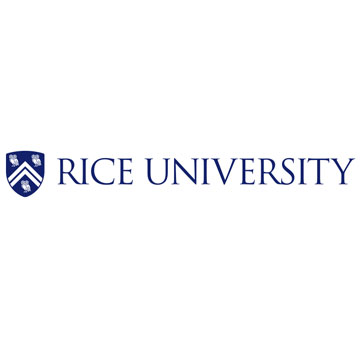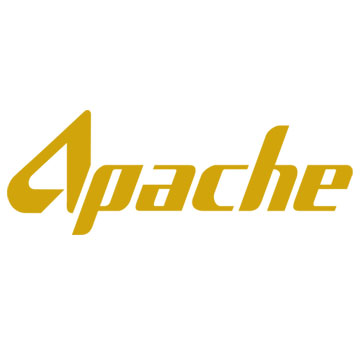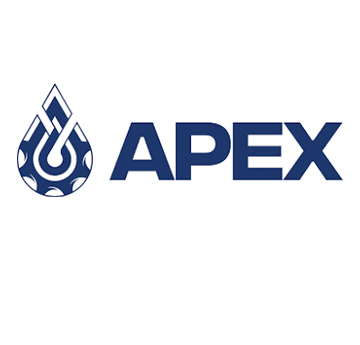The Challenge
Many countries in oil producing regions are water stressed-countries with relatively, very limited freshwater resources. Oil and gas producers must source large volumes of fresh water for their processes which means they are competing with local needs such as domestic supply and agriculture in the local communities.
However, a by-product of the drilling process is produced water, water that comes out of an oil or gas well with the desired hydrocarbon. In many parts of the world the ratio of produced water to oil is close to 3:1. In other words they produce more water than oil.
Unfortunately, produced water is contaminated with oil (and other hydrocarbons), chemicals that were used during the extraction process and, in many cases, bacteria. Produced water therefore cannot be re-used and is instead treated (which costs billions of dollars per year globally and often requires chemical treatment that results in additional hazardous waste) before being disposed of down hole. Furthermore, produced water normally contains about 5% hydrocarbon and oils that are essentially wasted.
The Method
Membranes are ideal for separating liquid components. However, trying to treat produced water with traditional commercial membranes results in immediate fouling (blocking). Even if the membrane is unblocked this can require chemicals which results in the membrane deteriorating after each use and becoming less effective over time.
Through his research into membranes Professor Andrew Barron has discovered that if ceramic membranes are made superhydrophilic (water loving) then fouling is reduced to manageable levels. Furthermore, the membranes actually operate at a faster rate and lower pressure, which further lowers the potential of fouling.
This superhydrophilic affect is achieved by chemically treating the surface of commercial alumina membranes with an amino acid.
The initial research has been conducted in partnership with Rice University, and subsequently in collaboration with King Saud University as part of the King Saud University-Swansea University Collaborative (K(SU)2). Industry partners include Apache Corporation and Atech Innovations GMBH.
Initial funding for the work conducted by Professor Barron at the Energy Safety Research Institute (ESRI) came from came from Sêr Cymru. Subsequent funding was provided by Apache Corporation with more recent funding to develop next generation surface treatment coming from Apex Water Solutions in Qatar.
Professor Barron is founder and director of the Energy Safety Research Institute (ESRI) at Swansea University and Sêr Cymru Chair of Low Carbon Energy and Environment.
The Impact
Professor Barron’s research has major implications for the future of oil production and the regions in which oil is extracted. For instance, given global oil production, separating oil from produced water would reduce the need for drilling new oil wells (between 4,000 and 120,000 wells). Reusing produced water will also reduce the demand for fresh water from local supplies.
Currently, Qatar is adopting the membrane system for treatment of produced water by building a pilot unit for 6000 barrels per day. Full scale adoption will lower the need for additional wells and also enable the recovery of the Rus and Umm er Rhaduma aquifers, which are being drained faster than they are being replenished.
In the USA, Apache Corporation has built a commercial scale demonstration unit that treats up to 8000 barrels of produced water per day (12 million litres per day). The demonstration unit has been operational for over 18 months and replaces chemical treatment and disposal of waste at a fraction of the cost of previous processes. Apache can now reuse its produced water and does not have to drill water wells in competition with local farming and domestic supply in West Texas where water is a scarce resource.
The Texas Railroad Commission, which is responsible for natural resources and the environment in Texas, has announced that the re-use of produced water should be encouraged with suitable treatment.
As well as being of use in the oil and gas industry the membrane can be used in water-stressed countries to remove contaminants (hydrocarbons, chemicals and bacteria) from ground water sources, which can then be used for irrigation, industrial cooling, and, with further purification, drinking.


